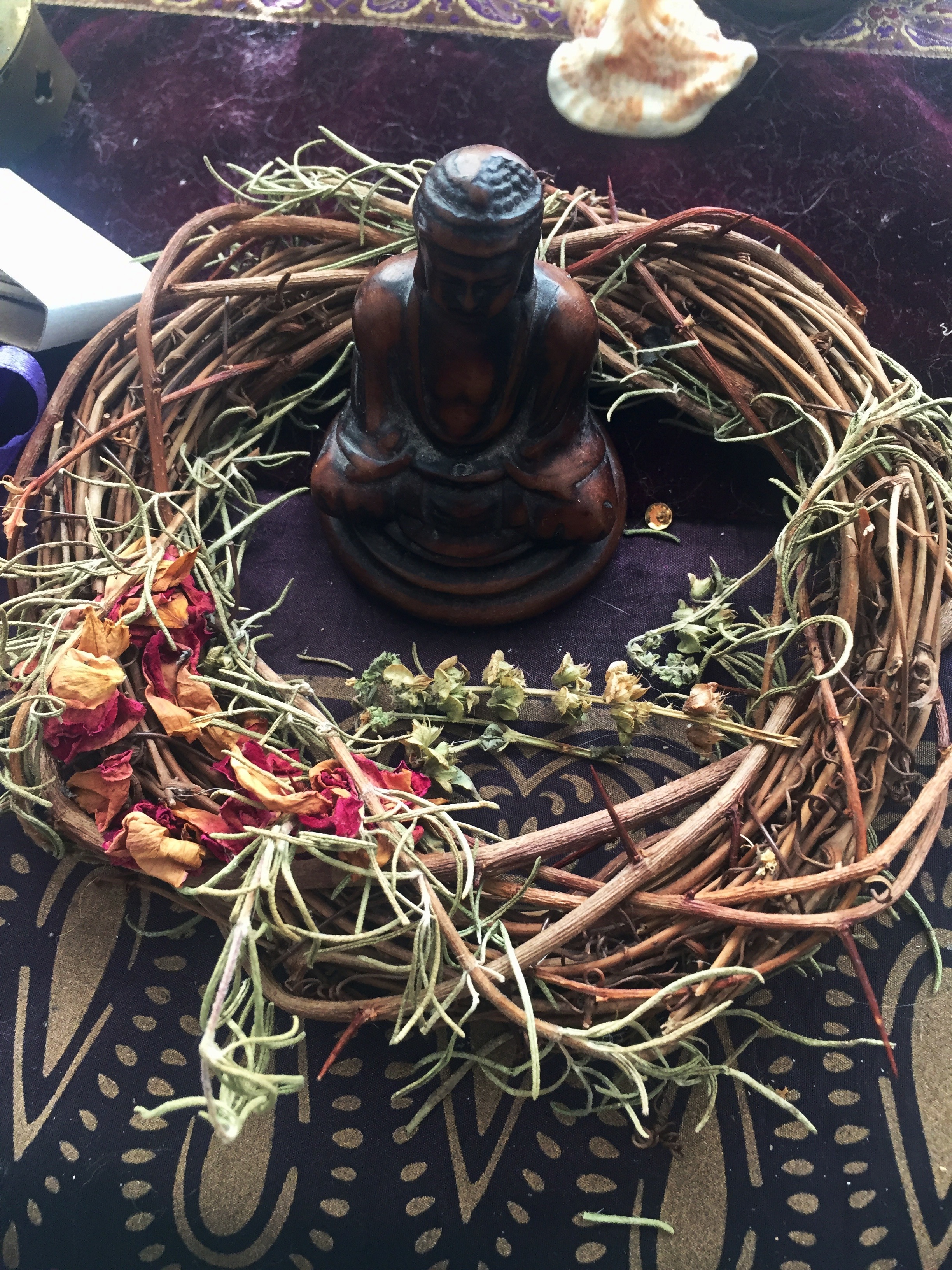Extraction
The best quality essential oils are extracted by steam distillation. In this method, the herbs are placed on a screen over boiling water in a large covered vessel. The steam rises and then descends down a coiled tube where the vapor condenses. The separated oil and water are caught in a container where the lighter oil floats on top of the water and is decanted.
Some plants, jasmine being the most notable, have less volatile oil and are extracted by solvents. The petroleum based by-products work at room temperature and pull the oils from the plant. It also pulls out the wax and colorants resulting in a colored and thicker oil. This waxy substance is then mixed with alcohol to extract the aromatics. It is sold as an absolute. Any time you see “absolute” on a label, you know that that plant has been solvent extracted. Common oils that are sold using this method are: tuberose, carnation, gardenia, jonquil, violet leaf, narcissus, and mimosa.
Guidelines for Purchasing
So how do you choose a brand? There are several things to take into consideration when purchasing oils. On the average, one drop of essential oil represents the extraction of one ounce or more of plant material. That’s a lot of plant material harvested annually for human use. I buy the oils I know I am going to use on a regular basis, with a couple I want to get to know better.
When looking for an essential oil brand, company research is critical. Do they guarantee their oils are “100% pure essential oil”? If they don’t, it’s probably not. Are they a large company or a small one? I choose small companies that have long term relationships with small growers and compensate them well. I also like companies owned by aromatherapy practitioners that are well respected in their field and preferably have some knowledge of botany and herbology.
The next item may be surprising given all the talk about “grades,” but there are no certifications for essential oils. Sometimes on labels you’ll see oils classified as “therapeutic grade” or “aromatherapy grade” but this is misleading. No government agency or organization grades or certifies essential oils. The term “therapeutic grade” was used by a company as a marketing ploy and shortly afterward almost all essential oil companies were using those words. So, while the grade on the label sounds good, it has no inherent value or claim to quality.
All of the following information should be available for the oil, if not directly on the label it should be listed in the product description: the common plant name, Latin name (exact genus and species), country of origin, part of the plant processed, type of extraction (distillation or expression), and how it was grown (organic, wild-crafted, traditional).
How to Use Essential Oils
Internally: Because essential oils are so concentrated the only way I recommend using essential oils internally is as a mouthwash.
A drop of Tea Tree oil in 1/4 cup of water as a mouthwash for gingivitis and plaque. Swish and spit out.
Externally: There are many ways to use essential oils externally. One of the easiest is putting a drop of oil in the palm of the hand, rubbing your hands together, and inhaling from your cupped palms. This is only safe with non-dermatoxic oils. Lavender, Clary Sage, Geranium, Chamomile are all good candidates for this method.
Diffusers are the most popular way to enjoy essential oils. You may use a single oil or pick two or three essential oils to combine. There are a variety of diffusers from simple to elaborate. When anyone in my family starts to feel ill, in addition to my herbal allies, I like to start diffusing an oil with an affinity to kill germs in the air. Some of my favorites are Pine, Eucalyptus, and Fir. Diffusing for 15 minutes, twice a day is a great place to start.
For self-care luxury, I like to mix essential oils into bath oils or salts. It’s important to emulsify essential oils before adding them to the bath. If the oil isn’t mixed into milk or salt before adding to the bath, the oil molecules will merely float on top of the water. Some oils (particularly the citrus) are very irritating to the skin and could cause an allergic reaction.To emulsify add a maximum of 5 drops to 1/2 cup of milk or salt, mix well and add to bath.
Diluting Essential Oils for Use on the Skin
To use essential oils on the skin they must be diluted in a carrier oil. There are many options for carrier oils: sweet almond oil, jojoba oil, olive oil, apricot kernel oil, and coconut oil to name a few. Sweet almond oil is a great carrier oil when creating massage blends. I like jojoba oil for moisturizing blends because it is absorbed quickly into the skin and doesn’t leave a greasy feeling. Experiment with small amounts of carrier oils to see how you like the final results before making a larger batch.
When making essential blends, there are generally three levels of dilution. A 1% dilution is used for children and elders. A 2% dilution is for general and adult use. 3% dilutions are used for acute health conditions.


































